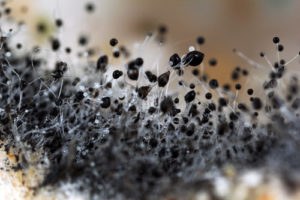Learn About the Mold Life Cycle

Mold Has Life Cycles, Learn About Which Part Puts You Most at Risk
It often seems as though mold infestations spring up overnight, but as with all organisms mold follows a specific life cycle from genesis through “death.” Here’s a look at the life cycle of mold and how it impacts Manhattan mold removal.
Mold Life Cycle from Beginning to End
• Mold originates from a thread-like cell known as a hypha. Once the hypha finds a suitable surface with the requisite moisture, it puts down roots to absorb nutrients from the underlying organic materials. As a result, the hypha multiplies into a mass called a mycelium, which is when mold becomes visible.
• Eventually some of the hyphae develop spores, which are the reproductive elements of mold.
• Spores are released into the atmosphere, where they drift until they find another spot conducive to mold development.
• After the spores settle, the cycle comes full circle and continues to repeat itself.
Interrupting the Mold Life Cycle
Simply wiping down a mold-infested surface is as useless as cutting back the visible part of weeds. As long as the hyphae are anchored to the host surface, they’ll continue to draw the nutrients required for growth.
Effective Manhattan mold removal is a two-step process:
• Apply a mold-repelling substance to affected surfaces.
• Remove excess moisture from the surrounding atmosphere.
MoldExterm: Eco-Friendly and Cost-Effective Manhattan Mold Removal
Our proprietary MoldExterm treatment is the only method incorporating both factors needed for successful mold removal. For more information, contact Stern Mold and schedule a free mold inspection by our experienced technicians.
